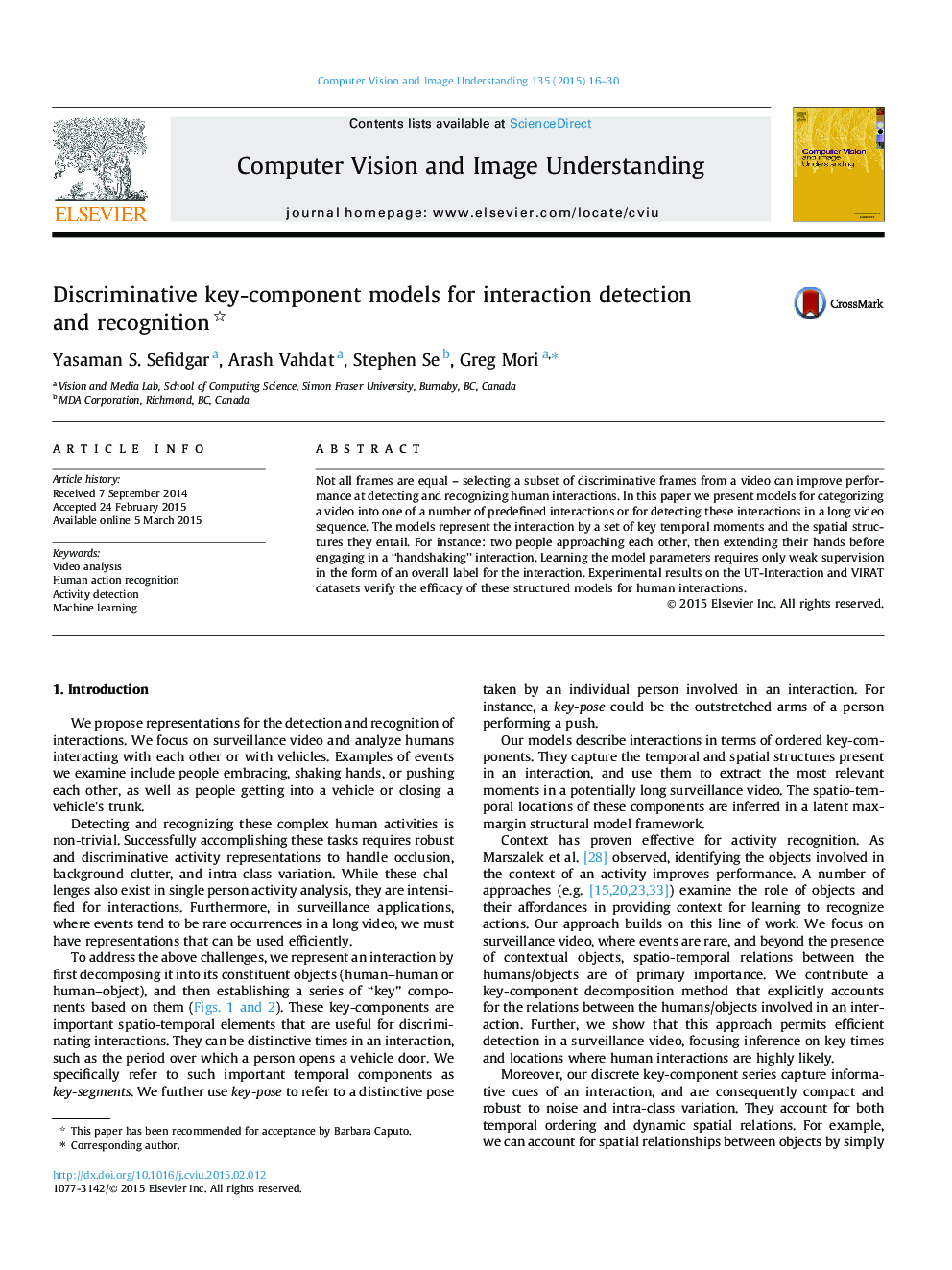| Article ID | Journal | Published Year | Pages | File Type |
|---|---|---|---|---|
| 525557 | Computer Vision and Image Understanding | 2015 | 15 Pages |
•We present key-component models for selecting important temporal instants or human poses from video sequences.•Human interaction key-component models are learned from weakly supervised data.•We demonstrate empirical results on the VIRAT and UT-Interaction datasets.
Not all frames are equal – selecting a subset of discriminative frames from a video can improve performance at detecting and recognizing human interactions. In this paper we present models for categorizing a video into one of a number of predefined interactions or for detecting these interactions in a long video sequence. The models represent the interaction by a set of key temporal moments and the spatial structures they entail. For instance: two people approaching each other, then extending their hands before engaging in a “handshaking” interaction. Learning the model parameters requires only weak supervision in the form of an overall label for the interaction. Experimental results on the UT-Interaction and VIRAT datasets verify the efficacy of these structured models for human interactions.
